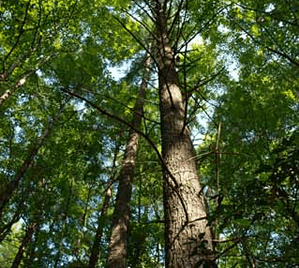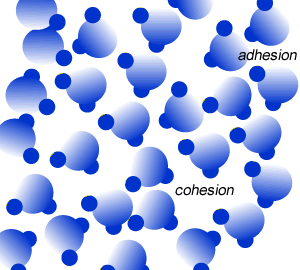Water can move up giant trees by a process called capillary action. The vascular system of trees, and most plants for that matter, that transports water and nutrients to the leaves consists of fine tubes made of xylem tissue.
Click to see a cross section of the fine tubular structures formed by xylem tissue in plants.

sourced from https://www.youtcliube.com/watch?v=mfDPOfW244k 28/06/21 8.36 pm.
Thin columns of water are pulled up the xylem. The charged poles of the water molecule attract one another, cohesion, as well as to the walls of the xylem tissue, adhesion. The unbroken column of water molecules is dragged upwards as water evaporates from the leaf. As one molecule of water evaporates from the top of the column another replaces it, thus dragging the entire column of water upwards into the leaf.


Explain the difference between cohesion and adhesion.
Explain how water is able to move up the trunk of tall trees.
Why is it necessary to avoid air bubbles in the xylem tissue of trees?